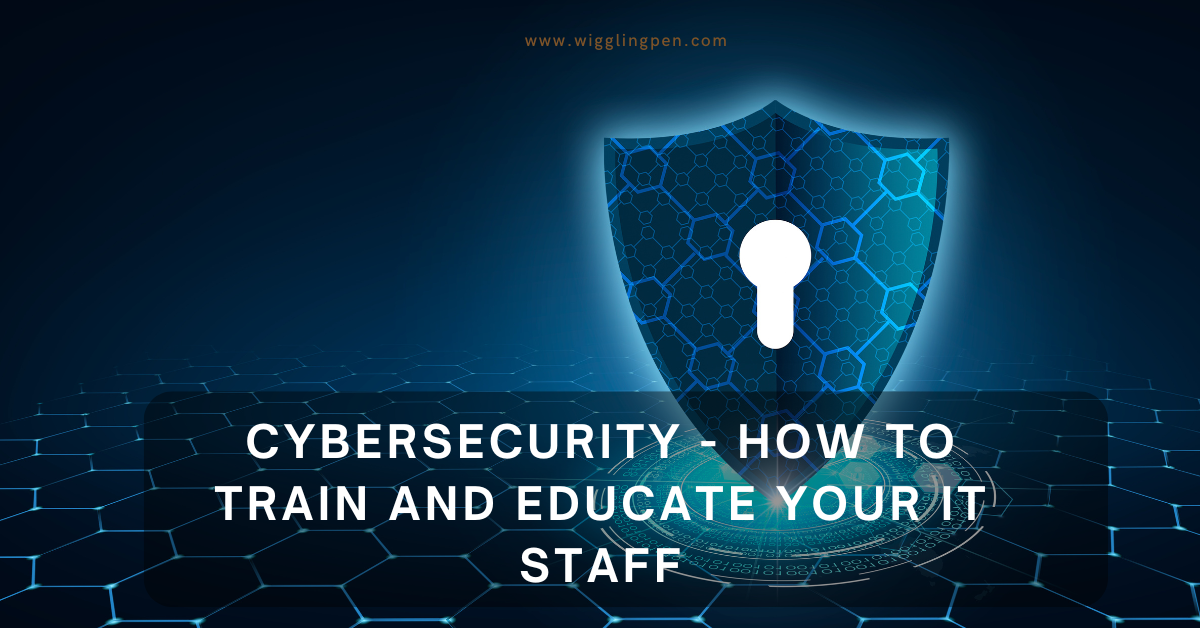
In today’s digital age, cybersecurity has become a critical concern for organizations worldwide. With the increasing frequency and sophistication of cyber threats, it is imperative for businesses to ensure that their IT staff are well-trained and educated on cybersecurity best practices. This comprehensive guide provides insights into effective strategies for training IT personnel, incorporating both global standards and Indian government initiatives.
The Rising Threat of Cyberattacks in India
India, as one of the fastest-growing digital economies in the world, has seen a sharp increase in the frequency and sophistication of cyberattacks in recent years. According to recent reports, India is facing a massive surge in cybercrimes, with sectors such as healthcare, government, banking, and education being the prime targets of cybercriminals. These threats range from phishing attacks and ransomware to advanced persistent threats (APTs) that target sensitive government data and private sector information.
The Indian Computer Emergency Response Team (CERT-In) has recorded an alarming increase in cyber incidents, with more than 10,000 cyberattacks in 2020 alone. The pandemic-induced shift to digital operations has only exacerbated this vulnerability, with many organizations struggling to keep up with the growing cyber threat landscape. This situation underscores the need for proactive cybersecurity measures, especially in organizations that handle sensitive data.
Common Cyberattack Types in India:
- Phishing Attacks: Cybercriminals impersonate legitimate organizations to steal sensitive data.
- Ransomware: Malicious software encrypts the victim’s data and demands payment for its release.
- Advanced Persistent Threats (APT): These long-term targeted attacks aim to steal sensitive data over an extended period.
- Data Breaches: Unauthorized access to data often leading to significant financial or reputational damage.
These trends highlight a critical vulnerability: human error. Cyberattacks often succeed due to lapses in employee awareness and weak security practices. With the increasing reliance on IT infrastructure, educating IT staff on cybersecurity best practices has never been more essential.
Key Components of Effective Cybersecurity Training
To safeguard against cyberattacks, organizations must implement a structured and ongoing training program for their IT staff. Key components include:
1. Comprehensive Awareness Programs
Regular awareness sessions are critical to keeping IT staff updated on the latest threats and security protocols. These programs should cover key areas such as:
- Phishing attacks
- Social engineering tactics
- Safe browsing practices
- Data encryption and protection
2. Role-Based Training
Different IT roles face varying security challenges. Tailoring training programs based on job responsibilities ensures that each team member is equipped with relevant and practical knowledge.
3. Hands-On Exercises and Simulations
Simulated phishing attacks, malware detection drills, and incident response simulations help assess the readiness of your IT staff and identify areas for improvement.
4. Regular Assessments and Feedback
Regular assessments ensure that the training programs are effective and up-to-date with the latest cyber threats. Providing feedback allows IT staff to continually improve their cybersecurity skills.
Integrating Indian Government Initiatives to Enhance Cybersecurity Awareness
In response to the growing threat of cyberattacks, the Government of India has launched several initiatives aimed at strengthening the nation’s cybersecurity framework. Integrating these initiatives into your organization’s cybersecurity training program can further enhance your IT staff’s preparedness.
1. Cyber Surakshit Bharat Initiative
Launched by: Ministry of Electronics and Information Technology (MeitY)
Objective: Cyber Surakshit Bharat aims to enhance cybersecurity awareness and provide capacity-building resources to government officials, CIOs, CISOs, and IT professionals in the private sector.
How It Helps:
- Offers specialized cybersecurity training for senior IT professionals.
- Promotes the use of best practices across government and private organizations.
- Organizes workshops and webinars to enhance the security skills of IT personnel.
How to Integrate: Enroll your IT staff in training workshops and seminars organized by MeitY to stay updated on national cybersecurity strategies.
Official Link: MeitY Cyber Surakshit Bharat
2. Cyber Swachhta Kendra (Botnet Cleaning and Malware Analysis Centre)
Launched by: Indian Computer Emergency Response Team (CERT-In)
Objective: The Cyber Swachhta Kendra provides free tools and resources for cleaning malware-infected systems and preventing botnet attacks. It also promotes safe internet practices.
How It Helps:
- Provides free antivirus and malware cleaning tools.
- Offers guidance on identifying botnet infections and resolving vulnerabilities.
- Supports the removal of malicious software from devices in your network.
How to Integrate: Use the free malware-cleaning tools in your training programs to help IT staff understand and mitigate common threats.
Official Link: Cyber Swachhta Kendra

3. Information Security Education and Awareness (ISEA)
Launched by: Ministry of Electronics and Information Technology (MeitY)
Objective: ISEA aims to improve cybersecurity education and raise awareness through online courses, training modules, and certification programs. It is designed to cater to different user groups, including IT professionals and general users.
How It Helps:
- Offers comprehensive cybersecurity training and certification programs.
- Provides up-to-date information on cybersecurity threats and defensive measures.
- Delivers role-based education to meet the needs of different sectors.
How to Integrate: Incorporate the ISEA digital Naagrik program into your internal training schedules to upskill IT staff on cybersecurity hygiene and safety.
Official Link: ISEA
4. CERT-In (Indian Computer Emergency Response Team)
Under: Ministry of Electronics and IT (MeitY)
Objective: CERT-In is responsible for issuing alerts and advisories, handling cybersecurity incidents, and providing vulnerability handling and remediation services.
How It Helps:
- Offers guidance on how to manage and respond to cybersecurity incidents.
- Publishes alerts about emerging threats like ransomware, APTs, and phishing.
- Provides incident response templates and frameworks for organizations.
How to Integrate: Have your IT team subscribe to CERT-In’s alerts and advisories to stay ahead of the curve on emerging threats.
Official Link: CERT-In Website
5. National Cyber Security Policy 2013 & Upcoming Cybersecurity Strategy
Launched by: Ministry of Home Affairs
Objective: The policy lays down a framework for addressing cybersecurity challenges in India, covering areas like risk management, critical infrastructure protection, and workforce development.
How It Helps:
- Provides a comprehensive view of India’s cybersecurity framework and standards.
- Aims to enhance the overall cybersecurity posture of the nation.
- Focuses on building a strong cybersecurity workforce and infrastructure.
How to Integrate: Align your organization’s cybersecurity policies with the National Cyber Security Policy to ensure compliance with national standards.
How to Integrate These Initiatives into Your Organization’s Training Program
| Step | Action | Government Resource |
| 1 | Assign your IT leaders to attend Cyber Surakshit Bharat workshops | MeitY Site |
| 2 | Schedule monthly threat review sessions using CERT-In updates | CERT-In Alerts |
| 3 | Provide malware detection training using tools from Cyber Swachhta Kendra | Cyber Swachhta Kendra |
| 4 | Develop awareness courses using ISEA’s digital Naagrik modules | ISEA Portal |
| 5 | Use the Cyber Security Policy 2013 as a guide for in-house protocols | Policy Document |
Conclusion
The Indian government has laid a solid foundation to support cybersecurity education and capacity-building. By integrating these initiatives into your training roadmap, you not only uplift your IT staff’s skill set but also contribute to a more secure digital India.
Conclusion: How to Stay Safe in the Current Cybersecurity Landscape
As India faces an unprecedented rise in cyberattacks, it is critical for organizations to take proactive steps in securing their IT infrastructure. Integrating government initiatives like Cyber Surakshit Bharat, CERT-In, and ISEA can provide your IT staff with the necessary tools and knowledge to stay ahead of evolving threats.
By combining cybersecurity best practices, leveraging Indian government resources, and ensuring continuous training for your IT staff, your organization can significantly reduce its exposure to cyber threats and enhance its overall security posture.
Through ongoing education and adherence to national cybersecurity frameworks, we can collectively contribute to a safer and more secure digital India.
© Ruchie Verma.
Disclaimer: The details mentioned in the post are true to the author’s knowledge and for information purposes ONLY. Unauthorized use and/or duplication of this material without express and written permission from this site’s author and/or owner is strictly prohibited.
Excerpts and links may be used, provided that full and clear credit is given to Ruchie Verma (WigglingPen) with appropriate and specific direction to the original content.







